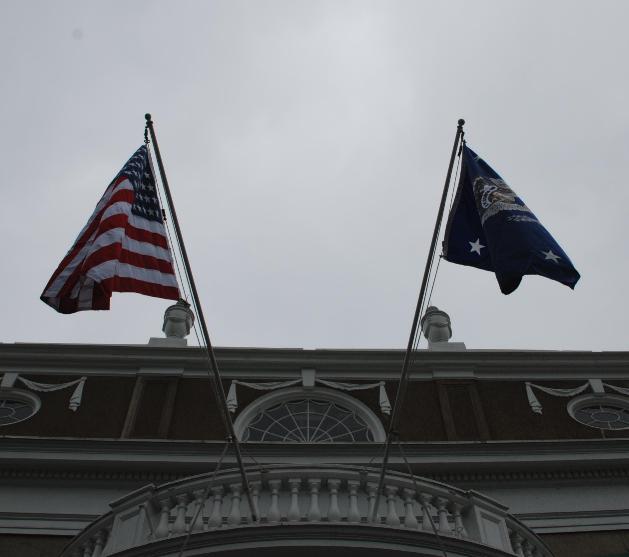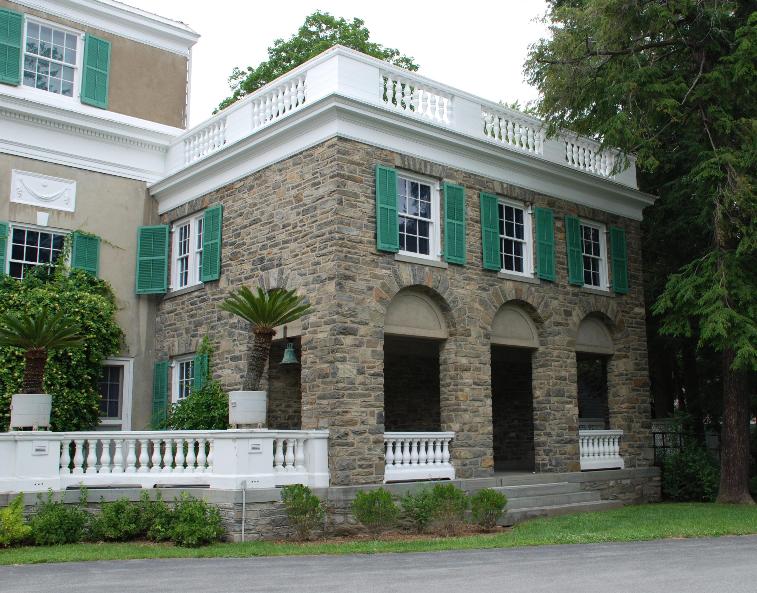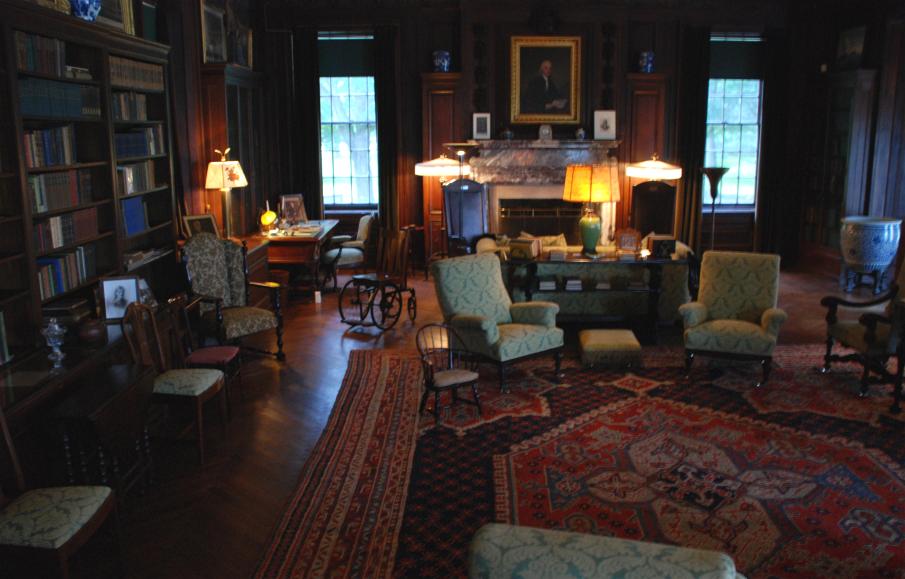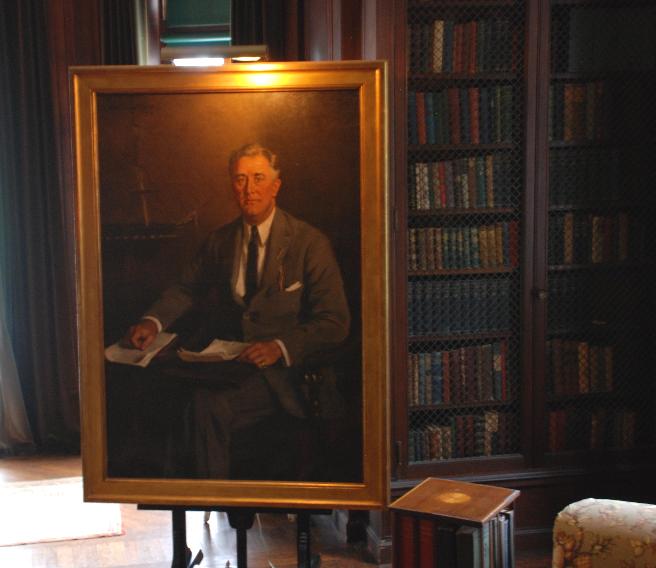Known as the Springwood estate in Hyde Park, New York, this was the
birthplace, home and burial place of Franklin Delano Roosevelt, the 32nd
President of the United States.
James Roosevelt,
Franklin’s father, purchased the estate in 1866 for $40,000. At that time it
had been remodeled from the original farmhouse that has been built about
1800. By the time the remodeling was completed, the house consisted of 15
rooms. The grounds also consisted of a stable and horse track, which was
important to James who had a great interest in horse breeding. Over James
34 years at the estate, he made numerous other improvements to include a
servants’ wing and an additional two rooms, along with a carriage house
built nearby.
FDR was born on
January 30, 1882, and was the second child to James and Sara Delano, his
second wife. The Roosevelt family had another home in New York City, and
would spent summers on Campobello Island in Canada. But still, they loved
their Springwood home, and its peaceful setting overlooking the Hudson
River.
FDR was educated
by private tutors as a child, and at age 14, left home to attend preparatory
school. He went to Harvard, graduated in 1904, and married Eleanor
Roosevelt, a distant cousin in 1905.
In 1915, FDR and
his mother Sara made the final preparations for enlarging and remodeling
Springwood. As the family was growing in size, this became necessary. FDR
also cared about the landscape and its appearance, and planned for the
extensive planting of trees. Between 1911 when the planting began, to 1945
upon his death, more than 400,000 trees were planted on the estate.
As you approach
Springwood, you are met by two flags that fly over the front entrance area.
One is the American flag, consisting of 48 stars that was such when FDR
lived there, and the other the Flag of the President of the United States,
with four stars, the only such flag in existence, as FDR is the only U.S.
president to serve four terms, each star representing one term.

The room shown
here below, which is to the right of the entrance, is the room that FDR
discussed the Manhattan Project.

As you enter the
house, you are standing in the entrance hall, a long somewhat narrow area
that displays on its walls many paintings, mostly naval, photographs and
historical cartoons, and specimens of birds collected in his boyhood, of
which he had about 300. Also here is a statue of FDR when he was 29 years
old. To the right side corner is a manually operated trunk elevator, which
the disable president used to move between floors.

The living room
and library is a large room where FDR worked on his many private collections
to include coin and stamp collecting that contained 1.2 million stamps and
thousands of coins and banknotes. His library over the years consisted of
14,000 volumes, and he amazed 2,000 naval painting, prints and lithographs.
Added to this private collection of many things were also about 200 ship
models, and campaign button and medallions.


The music room,
also called the “Dresden Room,” named for the origin of some of the
porcelain, is considered a formal parlor that contains many Chinese pieces
of porcelain and lacquer ware. These collections were acquired by FDR’s
mother who stayed in China, where James made a fortune in China trade.
This room,
together with an adjacent dining room was the setting for many formal diners
and entertaining of guests. One the piano is a collection of autographed
photographs of just some of the Roosevelt’s’ more famous guests.
When the house
was enlarged in 1915, a suite of rooms was created as bedrooms for Eleanor
and Franklin. Initially, these rooms included a sitting room and two
dressing rooms. But following FDR’s paralytic illness in 1921, one of the
dressing rooms was converted into a separate room for Eleanor, and the
sitting room into a bedroom for his mother Sara.

Another room
known as the “Snuggery,” was used by Sara for activities to begin her day
and for conducting the business of running the household. This room was
also created in the 1915 remodeling by a division of the old south parlor
into a gallery and the Snuggery. Because much of the original furniture of
the old parlor continued in use despite the rooms’ reduction in size, it
appears cluttered today.
FDR’s political
career began on January 1, 1911, when he served as a New York Senator until
March 17, 1913. On this day, he became Assistant Secretary of the Navy,
serving as such until August 26, 1920.
On January 1,
1929, he was elected governor of New York; serving until December 31, 1932.
On March 4, 1933,
FDR became the 32nd President of the United States, serving until
his death, dying in office on April 12, 1945, in his fourth term of office.
During his
presidency, he would visit Springwood home about 200 times. It was also
known as the “Summer White House,” where the President hosted many political
associates and other prominent national and international figures.

